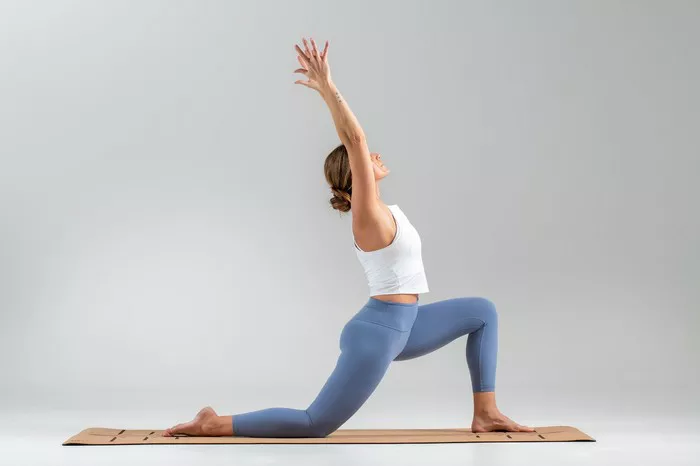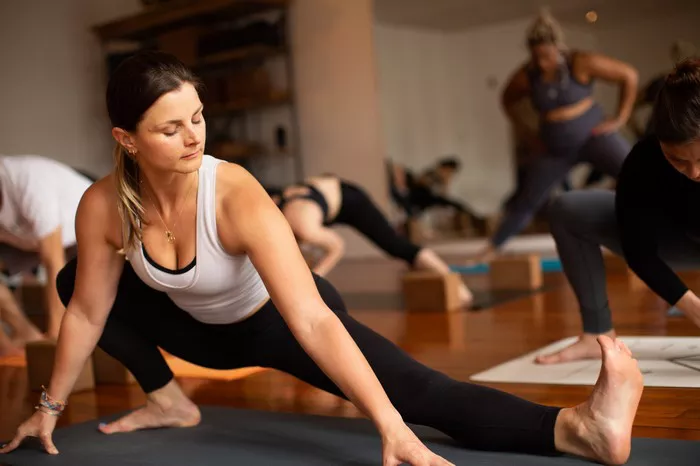Cat Pose, also known as Marjaryasana, is a foundational yoga posture that not only improves flexibility but also promotes mental clarity and relaxation. It is typically performed in a flowing sequence, combined with Cow Pose (Bitilasana), which together form a dynamic stretch known as the Cat-Cow Pose. This combination of poses is widely used in yoga practices to warm up the spine, improve posture, and release tension.
For beginners, Cat Pose offers a perfect introduction to the benefits of mindful breathing and body movement. It’s a gentle yet effective posture that targets several areas of the body, including the spine, neck, and abdominal muscles, making it essential for improving overall body alignment and posture. Understanding how to perform Cat Pose properly is crucial to maximizing its benefits.
In this article, we will break down the steps of Cat Pose for beginners, explore its benefits, and offer tips for improving your practice.
Understanding the Basics of Cat Pose
Before diving into the steps, it’s important to understand the essential components of Marjaryasana. The Cat Pose involves a flexion of the spine, which is when you arch your back inwards toward your belly button. This action helps to stretch the back muscles and open up the spaces between the vertebrae. Additionally, the posture engages your core and promotes stability.
Cat Pose is typically paired with Cow Pose, which is a complementary posture where the spine arches in the opposite direction, promoting spinal extension. The transition between these two poses creates a dynamic flow, encouraging fluid movement and deep breathing.
Step-by-Step Guide to Performing Cat Pose
Now that you have a basic understanding of Cat Pose, let’s break it down step by step.
Step 1: Set Up Your Foundation
Start by finding a comfortable and stable position on your yoga mat. For Cat Pose, you will need to begin in a Tabletop Position, also known as the All-Fours Position. Here’s how to do it:
Knees: Start on your hands and knees. Place your knees directly beneath your hips, ensuring they are hip-width apart.
Hands: Position your hands beneath your shoulders, with your fingers spread wide to create a firm foundation. Keep your wrists aligned with your shoulders.
Body Alignment: Ensure that your spine is in a neutral position. Your head should align with your spine, and your neck should not be strained.
Make sure that your body feels stable and centered, with even weight distribution between your hands and knees.
Step 2: Begin the Inhalation (Preparing for Cow Pose)
Before you move into Cat Pose, take a moment to inhale deeply, preparing your body for the movement. Cat Pose is typically performed as part of a flowing sequence, and a deep breath helps establish a strong connection to the practice.
Inhale: As you inhale, allow your belly to drop slightly toward the floor, arching your lower back. This will create an extension of the spine, leading into Cow Pose (Bitilasana). The chest and head will lift slightly as your shoulder blades move together.
Gaze: Look slightly upward, or maintain a neutral gaze forward. This ensures that your neck remains elongated, not strained.
At this point, you are preparing your body for the subsequent movement into Cat Pose, where the spine will move in the opposite direction.
Step 3: Transition to Cat Pose
Now, move into Cat Pose by exhaling deeply. This is the key movement of the posture, as the spine will round, creating a flexion of the back.
Exhale: As you exhale, gently draw your belly button toward your spine and round your back toward the ceiling. Imagine that you are trying to create space between each vertebra, as if you are trying to “spread” the vertebrae apart.
Tailbone: Tuck your tailbone under slightly, which helps engage your lower abdominal muscles.
Head and Neck: Gently lower your head towards the floor, bringing your chin to your chest. Make sure your neck stays long and relaxed — avoid forcing your head down.
Engage Your Core: Activate your abdominal muscles and core to help support your spine as you move into the rounded shape.
During the exhale, focus on the movement of your spine. The idea is to move fluidly from Cow Pose into Cat Pose, paying attention to each vertebra’s movement as you round the back and engage the core muscles.
Step 4: Hold the Pose for a Few Moments
Once you are in the rounded position of Cat Pose, hold the posture for a few breaths. In yoga, it’s common to move in and out of poses with each breath. In Cat Pose, you can hold for about 3-5 breaths to fully experience the stretch and the engagement of the core. Feel the stretch across your back, neck, and shoulders.
Step 5: Return to Tabletop Position
After holding the pose for several breaths, gently return to your neutral Tabletop Position by inhaling and coming back into the starting position. This prepares you for another round of the Cat-Cow flow, should you wish to repeat it.
Key Points to Remember
Breathing: Always synchronize your breath with your movement. Inhale as you move into Cow Pose, and exhale as you round your back into Cat Pose. This helps create a smooth and flowing rhythm.
Move Slowly: Beginners should take their time with each transition. There’s no rush — moving slowly allows you to connect with your body and enhances the benefits of the pose.
Mind the Alignment: It’s important to keep your wrists directly beneath your shoulders and your knees directly beneath your hips to avoid straining your joints.
Keep Your Neck Long: Avoid letting your head drop too much in either direction. Maintain a neutral spine and ensure your neck is not forced into a strained position.
Engage Your Core: Focus on engaging your core muscles, especially as you round your back in Cat Pose. This helps to support the spine and enhances the benefits of the posture.
Benefits of Cat Pose for Beginners
Spinal Flexibility and Strength: One of the key benefits of Cat Pose is its ability to improve spinal flexibility. The movement of the spine in both directions — flexion and extension — helps increase the mobility of the vertebrae. This can lead to a stronger and more flexible back.
Neck and Shoulder Relief: Cat Pose is especially beneficial for releasing tension in the neck and shoulders, areas that tend to hold stress. The rounded back helps stretch the muscles in the upper back and neck, promoting relaxation.
Core Activation: Engaging your core while rounding your back strengthens the muscles in the abdomen and lower back, improving overall core strength and stability.
Posture Improvement: Since Cat Pose encourages the engagement of the abdominal and spinal muscles, it is great for improving posture. It helps you become more aware of your body alignment, which translates to better posture throughout the day.
Mind-Body Connection: Like most yoga poses, Cat Pose helps improve the mind-body connection. By focusing on your breath and your spinal movement, you become more aware of how your body feels and how your movements impact your energy levels.
Stress Relief: The deep breathing and mindful movement help reduce stress and anxiety. The flow of the Cat-Cow sequence can also stimulate the parasympathetic nervous system, promoting relaxation and emotional calmness.
Common Mistakes to Avoid
Arching the Back Too Much in Cow Pose: While performing Cow Pose, it’s important to avoid over-arching the back. Instead of letting your lower back collapse, maintain engagement through your core to protect your spine.
Dropping the Head in Cat Pose: The head should not hang loosely in Cat Pose. Always keep your neck aligned with your spine and avoid forcing your chin to your chest.
Lack of Core Engagement: A common mistake is neglecting to engage the abdominal muscles. Without core engagement, you risk straining your lower back while performing the pose.
Modifications and Variations for Beginners
For beginners, it’s okay if you can’t get into the full version of Cat Pose right away. Here are a few modifications and variations you can try:
Use a Blanket or Cushion: If your knees feel uncomfortable, place a folded blanket or cushion underneath them for added support.
Gentle Movement: If you’re unable to fully round your back, move in a smaller range of motion at first. Gradually increase the range of motion as your flexibility improves.
Chair Yoga: For those who find the floor difficult to access, you can modify Cat Pose using a chair. Sit with your feet flat on the floor, and place your hands on the seat of the chair. Perform the same movement, focusing on the spinal flexion.
Conclusion
Cat Pose is an excellent posture for beginners, providing numerous physical and mental benefits. By incorporating this posture into your yoga practice, you can improve spinal flexibility, strengthen your core, and reduce tension in the neck and shoulders. The key to mastering Cat Pose is patience, mindfulness, and a focus on proper alignment and breathing.
With regular practice, you will develop greater awareness of your body’s movement and enhance your overall well-being. Whether you are new to yoga or an experienced practitioner, Cat Pose is an essential tool for enhancing your practice and fostering relaxation.
Related topics:























